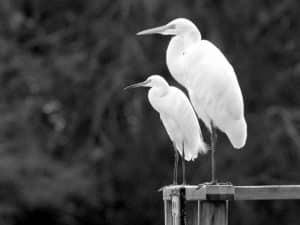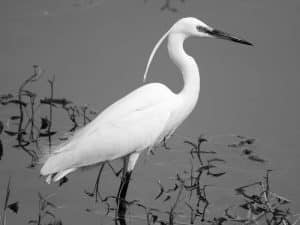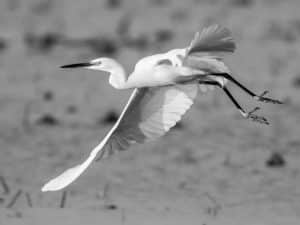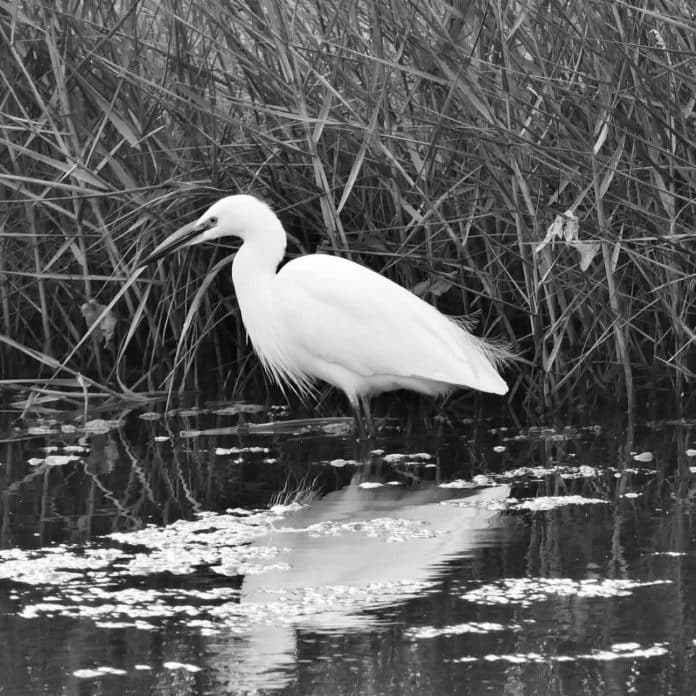Introduction to the Little Egret in Tanzania
Tanzania is home to a diverse range of bird species, and among them, the graceful Little Egret stands out as a captivating sight for birdwatchers. The Little Egret in Tanzania, scientifically known as Egretta garzetta, is a small, elegant bird that belongs to the heron family, Ardeidae. Its slender figure, pristine white plumage, and distinctive black legs and bill make it a delightful subject for observation and photography. As you delve into the world of birdwatching in Tanzania, the Little Egret is a fascinating species to explore.
Habitat and Distribution of the Little Egret

The Little Egret is widely distributed across the globe, inhabiting various regions from Europe and Africa to Asia and Australia. In Tanzania, these beautiful birds can be found in a range of habitats, including wetlands, marshes, rivers, lakes, and coastal areas. They are often seen wading in shallow waters, where they patiently stalk their prey, which mainly consists of fish, amphibians, and insects. The diverse landscapes of Tanzania provide ample opportunities for the Little Egret to thrive, making it a common sight for birdwatchers exploring the country’s natural beauty.
Behavior and Characteristics of the Little Egret
Observe the Little Egret in its natural habitat, and you’ll be enchanted by its graceful movements and elegant demeanor. These birds are known for their agility and precision when hunting for food, using their long, slender bills to capture prey with remarkable accuracy. During breeding season, their plumage undergoes a transformation, with the development of delicate plumes on their back, chest, and head, adding to their allure. Additionally, the Little Egret is a highly vocal species, emitting a variety of calls and displays, especially during courtship and territorial interactions. Understanding the behavior and characteristics of these birds enhances the birdwatching experience, allowing you to appreciate the intricacies of their daily lives.
The Little Egret’s Role in Tanzanian Ecosystems
As a key player in Tanzanian ecosystems, the Little Egret contributes to the balance of its natural surroundings. By preying on small fish and aquatic creatures, it helps regulate the population of these species, preventing overpopulation that could disrupt the ecological equilibrium. Furthermore, their foraging activities in wetlands and water bodies stir up the sediment, which can have a positive impact on nutrient cycling and the overall health of aquatic environments. The presence of Little Egrets is indicative of the richness and biodiversity of Tanzania’s ecosystems, signifying the interconnectedness of all living organisms within these habitats.
Conservation Efforts for the Little Egret in Tanzania

Despite their widespread distribution, Little Egrets face various threats to their survival, including habitat loss, pollution, and disturbance at breeding sites. To safeguard these elegant birds and their habitats in Tanzania, conservation efforts are essential. Conservation organizations and government agencies are working towards the protection of wetlands and coastal areas, which are crucial for the Little Egret’s nesting and foraging activities. Through habitat restoration, community engagement, and monitoring programs, conservationists aim to secure a sustainable future for the Little Egret and other avian species in Tanzania.
Best Places for Birdwatching Little Egrets in Tanzania
Tanzania boasts an array of exceptional birdwatching destinations, where you can marvel at the beauty of the Little Egret amidst stunning natural landscapes. The shores of Lake Victoria, the largest lake in Africa, provide an ideal setting for observing these graceful birds as they forage along the water’s edge. Additionally, the wetlands of the Serengeti and Tarangire National Parks offer fantastic opportunities to spot Little Egrets in their natural habitats. The diverse ecosystems of Tanzania present birdwatchers with a myriad of locations to encounter these enchanting creatures up close.
Tips for Spotting Little Egrets in Tanzania
When embarking on a birdwatching adventure in Tanzania, it’s beneficial to equip yourself with the knowledge and skills necessary to spot Little Egrets in the wild. Patience is key, as these birds may initially appear elusive but can be observed with attentive and quiet observation. Early morning and late afternoon are prime times for birdwatching, as Little Egrets are often more active during these periods. Binoculars and a field guide to Tanzanian birds can enhance your birdwatching experience, allowing you to identify and appreciate the diverse avian species, including the charming Little Egret.
Photography and Observation of Little Egrets

Capturing the ethereal beauty of Little Egrets through photography is a rewarding pursuit for birdwatchers and nature enthusiasts. Their striking white plumage against the backdrop of Tanzania’s scenic landscapes creates captivating imagery. When photographing Little Egrets, consider the play of light and shadow, the reflection of the birds in the water, and their graceful movements as they wade and hunt. Through patient observation and a keen eye for detail, you can document the elegance and charm of these birds, creating lasting memories of your encounters with Little Egrets in Tanzania.
Fascinating Facts about Little Egrets
Delve into the world of Little Egrets, and you’ll uncover a wealth of fascinating facts that contribute to their allure. These birds are known for their remarkable migration journeys, spanning thousands of kilometers as they traverse continents in search of suitable habitats. Their breeding displays, characterized by the growth of ornate plumes and intricate courtship rituals, are a sight to behold. Furthermore, the Little Egret’s adaptability to diverse environments showcases their resilience and evolutionary success as a species. Understanding these captivating facts adds depth to the appreciation of Little Egrets and their significance in the natural world.
Conclusion
In conclusion, the Little Egret in Tanzania offers birdwatchers a captivating glimpse into the beauty and intricacies of avian life. From their graceful movements and elegant plumage to their vital role in Tanzanian ecosystems, these birds inspire awe and admiration. As you venture into the diverse habitats of Tanzania, keep an eye out for the enchanting presence of Little Egrets, and immerse yourself in the joy of observing and appreciating these graceful creatures. By understanding and cherishing the Little Egrets, we contribute to the conservation and appreciation of Tanzania’s rich avian biodiversity, ensuring that future generations can continue to marvel at the splendor of these elegant birds.

































